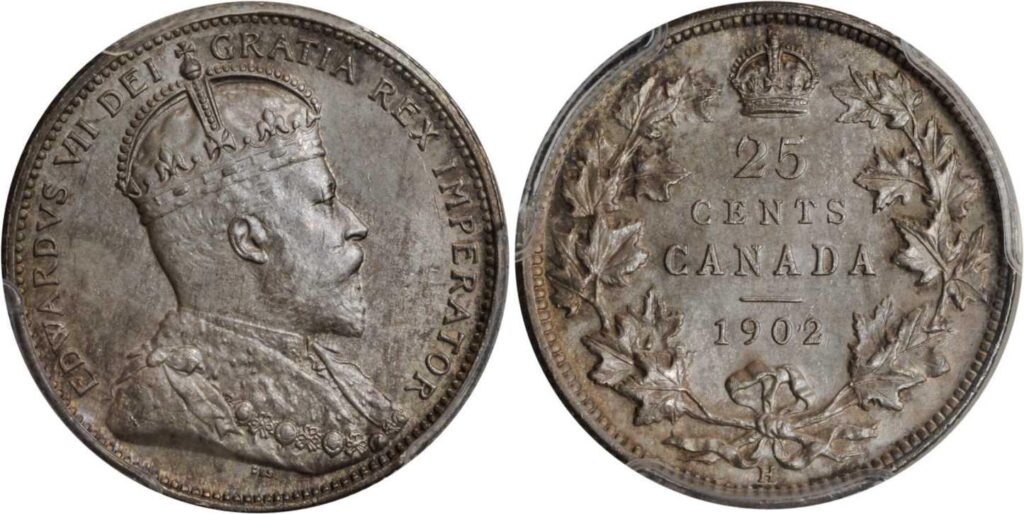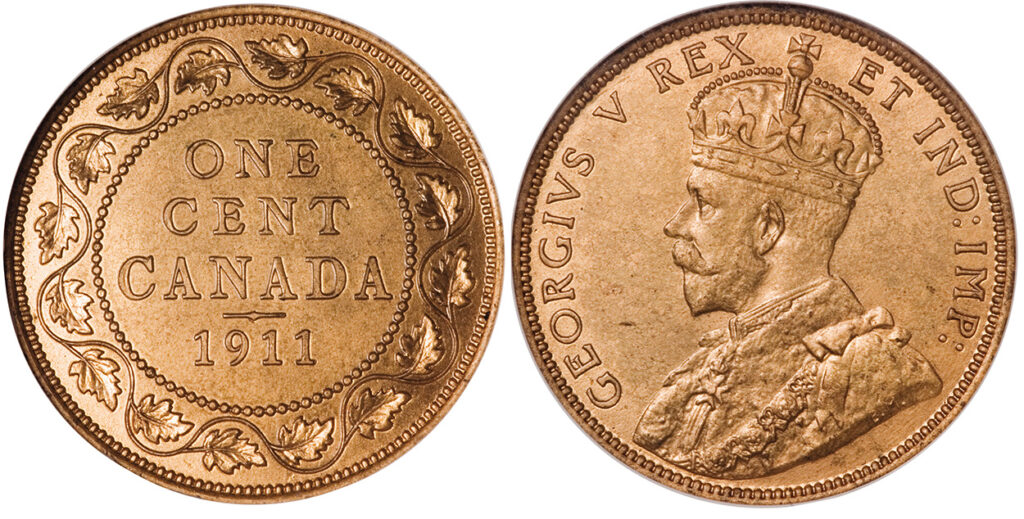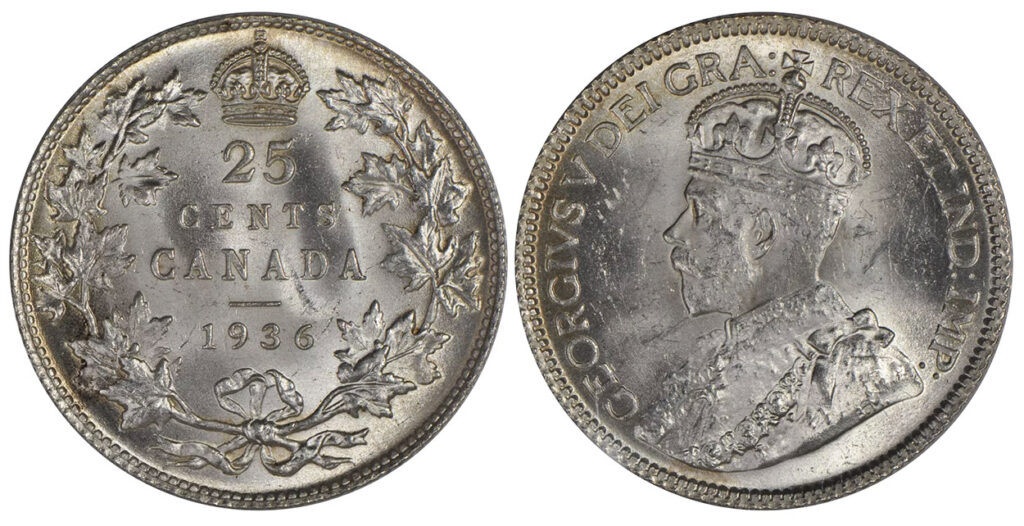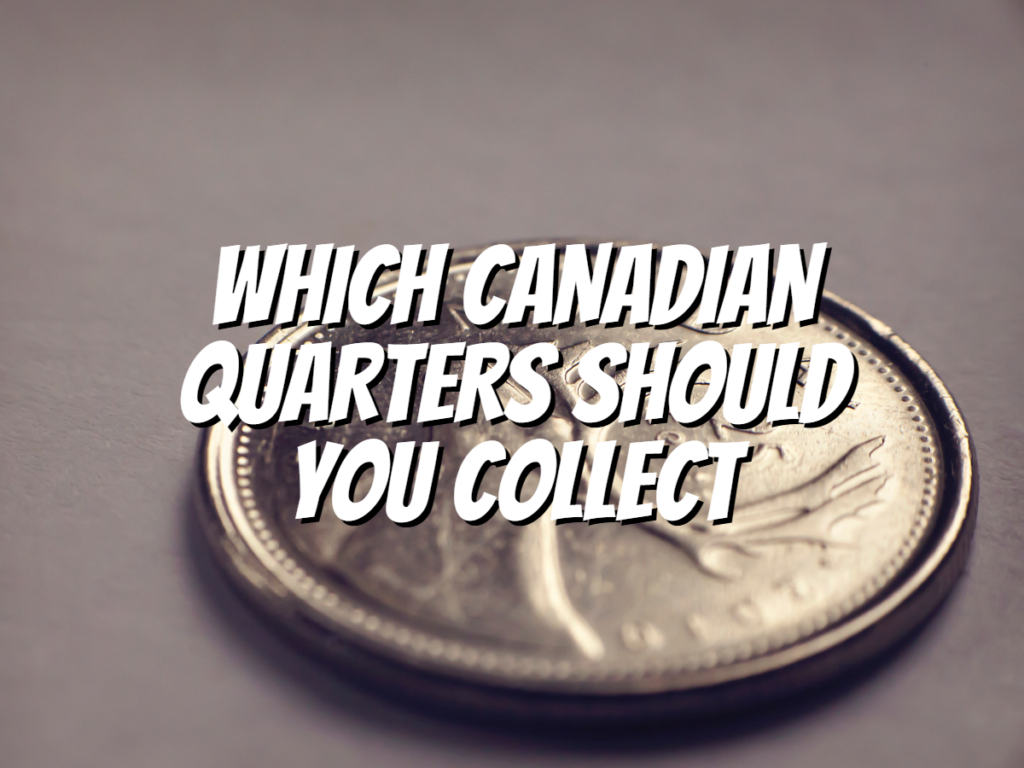The Canadian quarter is one of the most popular coins to collect. This article will discuss some of the rarest Canadian quarters you can find in circulation today.
Which Canadian Quarters Should You Collect:
Rare Victorian Canadian Quarters

These were the first coins minted by the British Mint in 1870 for the joining of Nova Scotia, New Brunswick, Quebec, and Ontario as the Dominion of Canada in 1867.
These coins have identical weight, size, and purity, just like British coins. Their reverse design included “CANADA” in its inscriptions.
Canadian coins also bore the portrait of Queen Victoria from 1870-1901.
The most valuable Canadian Victorian quarters in circulation are the 1875-H which has a value of $4,400—1889, valued at $2,100; and 1880-H, valued at $1,950.
The most valuable Victorian Canadian Quarters with a grade of MS-62 are the 1875-H, valued at $22,000. 1887, valued at $10,400, and 1889 valued at $8,900.
Rare Edward VII Canadian Quarters

Edward VII was the only Canadian monarch born outside Canada and King of Canada from 1901 to 1910.
Circulated coins range from $100-$200. Some of the circulated coins have a higher value than others.
Like 1904, valued at $450; 1905, valued at $290; and 1903, valued at $250.
Uncirculated versions of the coin with a grade of MS62 value around $1,000 up to $2,750!
The 1906 “Small Crown” Canadian Quarter

The 1906 “Small Crown” Canadian quarter is one of the most expensive coins in Canada.
This coin was minted from 1904 to 1910, but the last date makes this particular coin so rare.
What makes this coin one of the rarest Canadian quarters in history is that this was an error coin.
This error resulted from the use of old reverse dies, which were supposed to have a larger crown, but because of the error, the coin was struck with a smaller crown.
At first, no one could tell the difference between the two crowns until the 1980s.
This coin is valued at around $1,150 in uncirculated condition.
Rare George V Canadian Quarters

King George V reigned from 1911-1936. Due to the effects of World War I, the government had to reduce the purity of silver in coins across the Empire from .925 fine to .800 fine or 80% purity in 1920.
Circulated George V coins are valued at around $25-$60, but there are circulated versions with a higher value, like 1915, which is valued at $560, the 1936 Dot, valued at around $370, and 1921 valued at around $260.
Uncirculated versions of 1915 valued at $3,700, 1921 valued at $1,500, and 1936 at $1,375. All of these are MS-65 grade coins.
The 1911 “Godless” Canadian Quarter

Even after the passing of Edward VII in May 1910, coins continued to be minted with his image until the end of 1910 as it was customary. A new coin dies arrived at the Royal Mint in Ottawa in 1911.
This caused a scandal in 1911 because someone changed the royal inscription from “DEI GRATIA REX IMPERATOR” to “REX ET IND IMP.”
Canadians immediately noticed that the DEI GRATA (by the Grace of God) was missing on the coin, hence the name the “Godless” coin.
This error was immediately corrected for the 1912 issue of the coin.
The 1936 “Dot” Canadian Quarter

The 1936 “Dot” Canadian Quarter is a rare Canadian quarter. It’s worth $300-$500 in good condition.
The 1936 “Dot” Canadian Quarter is a valuable Canadian quarter, and an uncirculated version can go around $1,000, depending on the coin’s condition.
The 1947 “Dot” Canadian Quarter

In 1947 India received its independence from the British Empire granted on August 15, 1947.
At the time, nobody knew the negotiations were happening or if they would succeed, so no dies were created, removing the “IMP IND” (Emperor of India) from George VI’s titles for the Canadian quarters.
The Royal Canadian mint stamped a little maple leaf behind the 1947 date on the quarters made late in the year.
After some time, grease began to fill the maple leafy privy mark, which led to the “dot” being struck on very few quarters.
The Infamous 1967 Canadian Quarter

In the 1960s, nearly all the nations stop making silver coins due to the rise of silver prices.
For example, Australia began to strike its last silver coins in 1964; also, the US stopped making silver quarters and dimes in 1964.
By 1967, it was clear that most people were hoarding silver coins for their silver content because they were much more valuable than their face value.
This led to a coin shortage. As a result, the Canadian government decided to cut silver from 80% to 50% in the middle of the year.
Even today, dealers refuse to buy 1967 Canadian quarters because there is no way to tell how much silver is in any of the 1967 quarters.
This new quarter only lasted less than a year. Halfway in 1968, silver was removed from the Canadian quarter completely.
Before you go…
There are plenty of rare Canadian quarters to collect, and you can find them all by looking in your change or checking your local coin dealers!
Check out my next article: “A Guide to Canadian Coin Collecting.”
Related Articles:


Help me I just found a 2007 caribou quarter with no reeds and what appears to be a light strike and copper color showing in the light strike area. I think I have a 2007 small crown error but info on that coin is hard to find.